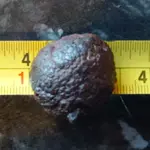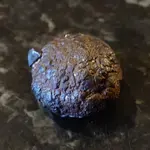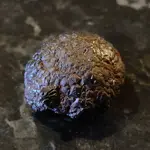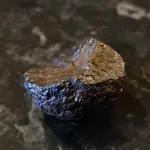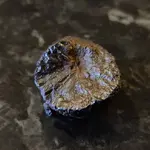Hi Nat, and welcome to Tnet.
Sorry, but that's not a mateorite.
Most meteorites exhibit significant attraction to a magnet, so you can immediately rule out nickel-iron classifications and all of the common classes of chondrites. Those that don’t exhibit significant attraction to a magnet typically belong to less common classifications such as low metal chondrites, carbonaceous chondrites or stony achondrites.
To be honest, it doesn’t “tick a lot of boxes for being a meteorite”. It has none of the following:
- Thin fusion crust which is darker than the interior
- Regmaglypts, aerodynamic sculpting, oriented flow lines or an ablation surface
- Impact shocking
- Chondrules
The exterior appearance and the radial striations visible in the broken interior look to be typical of a pyrite nodule (or a nodule rich in iron oxides with pyrite as a dominant mineral). Folks tend to think of pyrite as being golden in colour (as in ‘fool’s gold’) but it can weather to the kind of colour seen in your specimen. A freshly broken surface might reveal a more typical colour or a bronzy sheen. Pyrite (and most other iron minerals) are not attracted to a magnet, but the presence of small amounts of magnetite as a secondary mineral often creates a weak attraction.



